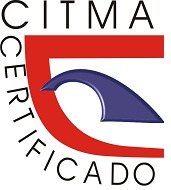An outline of Artificial Intelligence against COVID 19 in the world
Keywords:
Inteligencia Artificial, COVID 19, Diagnóstico médico, Aprendizaje AutomáticoAbstract
COVID 19 pandemic has changed several paradigms of the modern societies. More than 9 month since the initial outbreak there is no clear perspective about how and when it will be controlled. However, it is clear that a new world will appear after it. This paper presents an outline of the current contribution of Artificial Intelligence in the fight against the pandemic. The outline is based on the revision of more than 30 papers published in the most outstanding scientific journals reporting intelligent approaches against COVID. The most important topics of these papers are related to medical diagnosis, drugs discovery, pandemic forecasting and pandemic management. The most used intelligent techniques are machine learning tools, particularly deep learning methods. In spite of the fact that the presented outline is not exhaustive, it allows understanding which is the role that Artificial Intelligence can (must) play in this context.
References
Ahuja, A.S., Reddy, V.P. y Marques, O. (2020). Artificial intelligence and COVID-19: A multidisciplinary approach. Integrative Medicine Research, 9(100434). doi:10.1016/j.imr.2020.100434
Albahri, O.S., Zaidan, A.A., Albahri, A.S., Zaidan, B.B., Abdulkareem, K.H., Al-qaysi, Z.T., Alamoodi, A.H., Aleesa, A.M., Chyad, M.A., Alesa, R.M., Kem, B.B., Lakulu, M.M., Ibrahim, A.B. y Rashida, N.A. (2020). Systematic review of artificial intelligence techniques in the detection and classification of COVID-19 medical images in terms of evaluation and benchmarking: Taxonomy analysis, challenges, future solutions and methodological aspects. Journal of Infection and Public Health. doi:10.1016/j.jiph.2020.06.028
Araújo, E.J., Chaves, A.A. y Lorena, L.A.N. (2020). A mathematical model for the coverage location problem with overlap control. Computers & Industrial Engineering. 146(106548). doi:10.1016/j.cie.2020.106548
Barbosa-Libotte, G., Lobato, F.G., Mendes-Platt, G. y Silva-Neto, A.J. (2020). Determination of an optimal control strategy for vaccine administration in COVID-19 pandemic treatment. Computer Methods and Programs in Biomedicine, 196(105664). doi:10.1016/j.cmpb.2020.105664
Barredo-Arrieta, A., Díaz-Rodríguez, N., Del-Ser, J., Bennetot, A., Tabik, S., Barbado, A., Garcia, S., Gil-Lopez, S., Molina, D., Benjamins, R., Chatilaf, R. y Herrera, F. (2020). Explainable Artificial Intelligence (XAI): Concepts, taxonomies, opportunities and challenges toward responsible AI. Information Fusion, 58, 82–115. doi:10.1016/j.inffus.2019.12.012
Behnood, A., Golafshani, E. M. y Hosseini, S. M. (2020). Determinants of the infection rate of the COVID-19 in the U.S. using ANFIS and virus optimization algorithm (VOA). Chaos, Solitons and Fractals, 139(110051). doi:10.1016/j.chaos.2020.110051
Bello, R., Miao, D., Falcon, R., Nakata, M., Rosete,A. y Ciucci, D. (Eds.) (2020). Rough Sets, Proceedings of the International Joint Conference IJCRS 2020, Havana, Cuba, June 29 – July 3, 2020. Lecture Notes in Artificial Intelligence, Vol. 12179, [versión electrónica de Springerlink] https://www.springer.com/gp/book/9783030527044
Bullock, J., Luccioni, A., Hoffmann-Pham, K., Nga-Lam, C. S. y Luengo-Oroz, M. (2020). Mapping the Landscape of Artificial Intelligence Applications Against Covid-19. arXiv:2003.11336v1 cs.CY.
Cannon, J. (2019). Report shows consumers don’t trust artificial intelligence. Recuperado de: https://www.fintechnews.org/report-shows-consumers-dont-trust-artificial-intelligence/
Castillo, O. y Melin, P. (2020). Forecasting of COVID-19 time series for countries in the world based on a hybrid approach combining the fractal dimension and fuzzy logic. Chaos, Solitons and Fractals, 140(110242). doi: 10.1016/j.chaos.2020.110242
Coombs, C. (2020). Will COVID-19 be the tipping point for the Intelligent Automation of work? A review of the debate and implications for research. International Journal of Information Management, doi:10.1016/j.ijinfomgt.2020.102182
Díaz-Canel, M. y Núñez-Jover, J. (2020). Gestión gubernamental y ciencia cubana en el enfrentamiento a la COVID-19. Anales de la Academia de Ciencias de Cuba, 10(2, especial COVID-19)
Ebrahimnejad, A. y Verdegay, J.L. (2018). Fuzzy Sets-Based Methods and Techniques for Modern Analytics. Studies in Fuzziness and Soft Computing. Vol 364. Springer Nature. [versión electrónica de Springerlink] http://link.springer.com/book/10.1007/978-3-319-73903-8
Elavarasan, R.M. y Pugazhendhi, R. (2020). Restructured society and environment: A review on potential technological strategies to control the COVID-19 pandemic. Science of the Total Environment 725 (138858). doi: 10.1016/j.scitotenv.2020.138858
Farooq, J. y Bazaz, M.A. (2020). A novel adaptive deep learning model of COVID-19 with focus on mortality reduction strategies. Chaos, Solitons and Fractals, 138(110148). doi:10.1016/j.chaos.2020.110148
Fathollahi-Fard, A.M., Ahmadi, A., Goodarzian, F. y Cheikhrouhou, N. (2020). A bi-objective home healthcare routing and scheduling problem considering patients’ satisfaction in a fuzzy environment. Applied Soft Computing Journal, 93(106385). doi:10.1016/j.asoc.2020.106385
Gomes, R. Ribeiro, M. H. D. M., Mariani, V. C. y dos Santos, L. (2020). Forecasting Brazilian and American COVID-19 cases based on artificial intelligence coupled with climatic exogenous variables. Chaos, Solitons and Fractals, 139(110027). doi:10.1016/j.chaos.2020.110027
Issa, M. y Elaziz, M. A. (2020). Analyzing COVID-19 virus based on enhanced fragmented biological Local Aligner using improved Ions Motion Optimization algorithm. Applied Soft Computing Journal. doi:10.1016/j.asoc.2020.106683
Kaushik, A.C. y Raj, U. (2020). AI-driven drug discovery: A boon against COVID-19? AI Open, 1, 1–4. doi:10.1016/j.aiopen.2020.07.001
Kitchenham, B., Pretorius, R., Budgen, D., Brereton O. P., Turner, M., Niazi, M. y Linkman, S. (2010) Systematic literature reviews in software engineering – A tertiary study. Information and Software Technology, 52, 792–805. doi:10.1016/j.infsof.2010.03.006
Kubat, M. (2017). An Introduction to Machine Learning. 2nd ed. Springer International Publishing AG. [versión electrónica de Springerlink] http://link.springer.com/openurl?genre=book&isbn=978-3-319-63913-0
Kumar, A., Sharma, K., Singh, H., Naugriya, S.G., Gill S. S. y Buyya, R. (2021). A drone-based networked system and methods for combating coronavirus disease (COVID-19) pandemic. Future Generation Computer Systems, 115, 1–19, doi:10.1016/j.future.2020.08.046
Laghi, A. (2020). Cautions about radiologic diagnosis of COVID-19 infection driven by artificial intelligence. TheLancet, 2(May), 225. Recuperado: www.thelancet.com/digital-health.
Lalmuanawma, S., Hussain, J. y Chhakchhuak, L. (2020). Applications of machine learning and artificial intelligence for COVID-19 (SARS-CoV-2) pandemic: A review. Chaos, Solitons and Fractals, 139(110059), doi:10.1016/j.chaos.2020.110059
Lu, J., Feng, L., Yang, J., Hassan, M.M., Alelaiwi, A., y Humar, I. (2019). Artificial agent: The fusion of artificial intelligence and a mobile agent for energy-efficient traffic control in wireless sensor networks. Future Generation Computer Systems, 95, 45–51, doi:10.1016/j.future.2018.12.024
Magoulas, R. y Swoyer, S. (2020). AI Adoption in the Enterprise. Beijing: O´Reilly. Recuperado de http://www.oreilly.com/data/free/ai-adoption-in-the-enterprise.csp
Malki, Z., Atlam, E.S., Hassanien, A.E., Dagnew, G., Elhosseini, M.A. y Gad, I. (2020). Association between weather data and COVID-19 pandemic predicting mortality rate: Machine learning approaches. Chaos, Solitons and Fractals, 138(110137). doi:10.1016/j.chaos.2020.110137
Mardani, A, Saraji, M.K., Mishra, A.R. y Rani, P. (2020). A novel extended approach under hesitant fuzzy sets to design a framework for assessing the key challenges of digital health interventions adoption during the COVID-19 outbreak. Applied Soft Computing Journal, 96(106613). doi:10.1016/j.asoc.2020.106613
Mohanty, S., Harun, M., Rashid, A. I., Mridul, M., Mohanty, C. y Swayamsiddha, S. (2020). Application of Artificial Intelligence in COVID-19 drug repurposing. Diabetes & Metabolic Syndrome: Clinical Research & Reviews, 14, 1027-1031. doi: 10.1016/j.dsx.2020.06.068
Montes, G.A. y Goertzel, B. (2019). Distributed, decentralized, and democratized artificial intelligence. Technological Forecasting & Social Change, 141, 354–358. doi:10.1016/j.techfore.2018.11.010
Nikolopoulos, K., Punia, S., Schäfers, A., Tsinopoulos, C. y Vasilakis, C. (2020). Forecasting and planning during a pandemic: COVID-19 growth rates, supply chain disruptions, and governmental decisions. European Journal of Operational Research. doi:10.1016/j.ejor.2020.08.001
Ocampo, L y Yamagishi, K. (2020). Modeling the lockdown relaxation protocols of the Philippine government in response to the COVID-19 pandemic: An intuitionistic fuzzy DEMATEL analysis. Socio-Economic Planning Sciences, doi:10.1016/j.seps.2020.100911
Otoom, M., Otoum, N., Alzubaidi, M.A., Etoom, Y. y Banihani, R. (2020). An IoT-based framework for early identification and monitoring of COVID-19 cases. Biomedical Signal Processing and Control, 62(102149). doi:10.1016/j.bspc.2020.102149
Oyelade, O.N., y Ezugwu, A.E. (2020). A case-based reasoning framework for early detection and diagnosis of novel coronavirus. Informatics in Medicine Unlocked, 20100395. doi:10.1016/j.imu.2020.100395
Park, Y., Casey,D., Joshi, I., Zhu, J. y Cheng, F. (2020). Emergence of New Disease: How Can Artificial Intelligence Help? Trends in Molecular Medicine, July 26(7), 627-629. doi:10.1016/j.molmed.2020.04.007
Perrault, R., Shoham. Y., Brynjolfsson. E., Clark, J., Etchemendy, J., Grosz. B., et al. (2019) The AI Index 2019 Annual Report. AI Index Steering Committee. Human-Centered AI Institute. Stanford University. Recuperado de http://hai.stanford.edu/
Raju Vaishya, R., Javaid, M., Khan, I. H. y Haleem, A. (2020). Artificial Intelligence (AI) applications for COVID-19 pandemic. Diabetes & Metabolic Syndrome: Clinical Research & Reviews 14, 337-339. doi:10.1016/j.dsx.2020.04.012
Ransing, R., Nagendrappa, S., Patil, A., Shoib, S. y Sarkar, D. (2020). Potential role of artificial intelligence to address the COVID-19 outbreak-related mental health issues in India. Psychiatry Research, 290(113176). doi:10.1016/j.psychres.2020.113176
Ren, Z., Liao, H., y Liu Y. (2020). Generalized Z-numbers with hesitant fuzzy linguistic information and its application to medicine selection for the patients with mild symptoms of the COVID-19. Computers & Industrial Engineering, 145(106517). doi:10.1016/j.cie.2020.106517
Russell, S.J. y Norvig, P. (2010). Artificial Intelligence: A Modern Approach. 3rd ed. New Jersey: Prentice Hall.
Shaikh, F., Brun-Andersen, M., Sohail, M. R., Mulero, F., Awan, O., Dupont-Roettger, D., Kubassova, O., Dehmeshki, J., y Bisdas, S. (2020). Current Landscape of Imaging and the Potential Role for Artificial Intelligence in the Management of COVID-19, Current Problems in Diagnostic Radiology, 000, 1-6, doi: 10.1067/j.cpradiol.2020.06.009
Sipior, J.C. (2020). Considerations for development and use of AI in response to COVID-19. International Journal of Information Management. doi:10.1016/j.ijinfomgt.2020.102170
Skansi, S. (2018). Introduction to Deep Learning: From Logical Calculus to Artificial Intelligence. Springer Nature. [versión electrónica de Springerlink] http://link.springer.com/openurl?genre=book&isbn=978-3-319-73004-2
Skiena, S.S. (2017). The Data Science Design Manual. Springer [versión electrónica de Springerlink] http://link.springer.com/openurl?genre=book&isbn=978-3-319-55444-0
Suri, J.S., Puvvula, A., Biswas, M., Majhail, M., Saba, L., Faa, G., Singh, I.M., Oberleitner, R., Turk, M., Chadha, P.S., Johri, A.M., Sanches, J.M., Khanna, N.N., Viskovic, K., Mavrogeni, S., Laird, J.R., Pareek, G., Miner, M., Sobel, D.W., Balestrieri, A., Sfikakis, P.P., Tsoulfas, G., Protogerou, A., Misra, D.P., Agarwal, V., Kitas, G.D., Ahluwalia, P., Kolluri, R., Teji, J., Maini, M.A., Agbakoba, A, Dhanjil, S.K., Sockalingam, M., Saxena, A., Nicolaides, A., Sharma, A., Rathore, V., Ajuluchukwu,, J.N.A., Fatemi, M., Alizad, A., Viswanathan, V., Krishnan, P.K. y Naidu, S. (2020). COVID-19 pathways for brain and heart injury in comorbidity patients: A role of medical imaging and artificial intelligence-based COVID severity classification: A review. Computers in Biology and Medicine, doi: 10.1016/j.compbiomed.2020.103960
Swapnarekha, H., Behera, H.S., Nayak, J., y Naik B. (2020). Role of intelligent computing in COVID-19 prognosis: A state-of-the-art review. Chaos, Solitons and Fractals, 138(109947). doi: 10.1016/j.chaos.2020.109947
Talbi, E.G. (2009). Metaheuristics from Design to Implementation. London, UK: Wiley
Togaçar, M., Ergen, B. y Comert, Z. (2020). COVID-19 detection using deep learning models to exploit Social Mimic Optimization and structured chest X-ray images using fuzzy color and stacking approaches. Computers in Biology and Medicine, 121(103805). doi:10.1016/j.compbiomed.2020.103805
Velázquez-Pérez, L. (2020). La COVID-19: reto para la ciencia mundial, Editorial. Anales de la Academia de Ciencias de Cuba, 10(2, especial COVID-19)
Vinod, D.N. y Prabaharan, S.R.S. (2020). Data science and the role of Artificial Intelligence in achieving the fast diagnosis of COVID-1., Chaos, Solitons and Fractals, 140(110182), doi:10.1016/j.chaos.2020.110182
Wang, W. y Siau, K. (2018). Trusting Artificial Intelligence in Healthcare. En Twenty-fourth Americas Conference on Information Systems (AMCIS´2018), At.New Orleans. Recuperado de: http://www.researchgate.net
Yan, T., Wong, P. K., Ren,H., Wang, H., Wang, J. y Li, Y. (2020). Automatic distinction between COVID-19 and common pneumonia using multi-scale convolutional neural network on chest CT scans. Chaos, Solitons and Fractals, 140(110153), doi:10.1016/j.chaos.2020.110153
Downloads
Published
How to Cite
Issue
Section
License
Copyright (c) 2020 Alejandro Rosete Suárez, María Matilde García Lorenzo, Yailé Caballero, Rafael Bello

This work is licensed under a Creative Commons Attribution-NonCommercial 4.0 International License.













